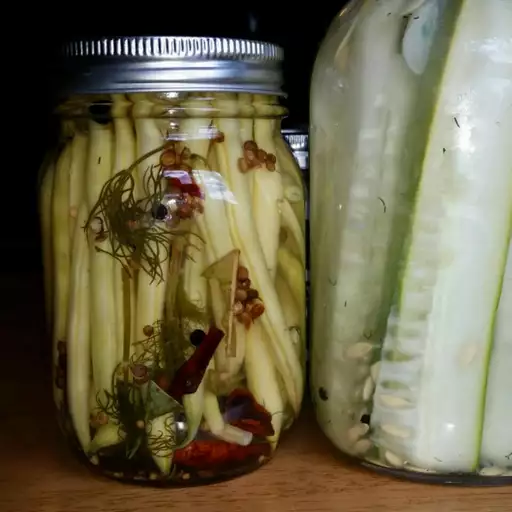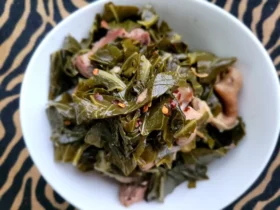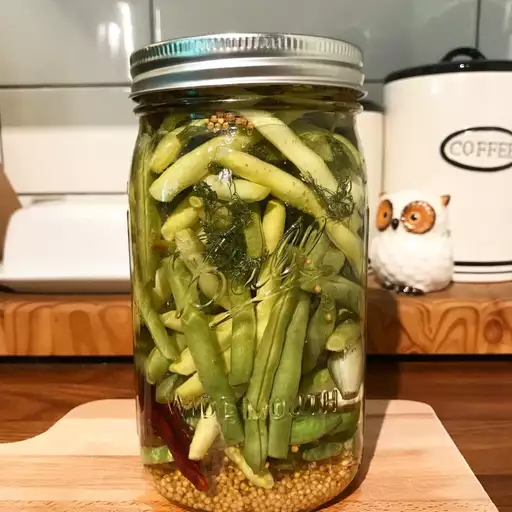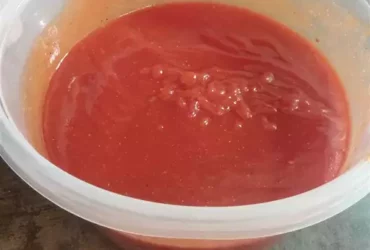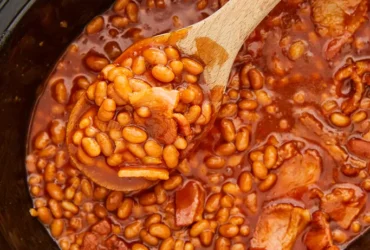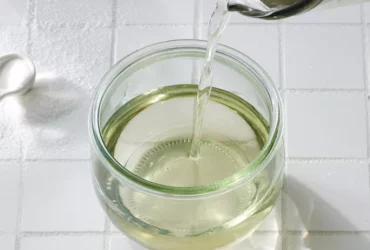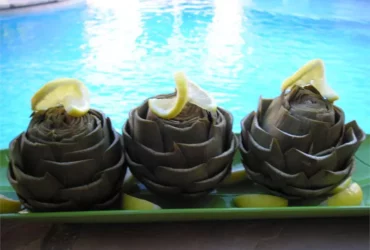What are Dilly Beans?
Definition
Dilly beans are a type of pickled green bean that has been preserved in a sweet and tangy brine, typically made with vinegar, sugar, salt, and spices. They are usually made from a variety of green beans, such as string beans or snap beans, which are harvested at the peak of freshness.
The term “dilly” is believed to have originated from the word “dill,” which refers to an herb commonly used in pickling. However, dilly beans do not necessarily contain dill as an ingredient, but rather get their name from the flavor profile they evoke.
Dilly beans are often made with a combination of spices and seasonings, including mustard seeds, coriander seeds, red pepper flakes, and garlic. The exact ingredients may vary depending on personal preference or regional traditions.
The process of making dilly beans typically involves blanching the green beans in boiling water to preserve their color and texture, then packing them into a jar with the pickling brine. The jar is sealed and refrigerated to allow the flavors to meld together over time.
Dilly beans are often served as a condiment or side dish, particularly in the Southern United States where they are considered a classic comfort food. They can be used to add flavor to various dishes, such as sandwiches, salads, and casseroles.
Some common varieties of dilly beans include spicy dilly beans, which contain more red pepper flakes for an extra kick, and garlic dilly beans, which have even more pronounced flavors from roasted garlic. The possibilities are endless when it comes to experimenting with different spices and flavor combinations to create unique dilly bean recipes.
In summary, dilly beans are a delicious and versatile condiment made by pickling green beans in a sweet and tangy brine. With their rich history and flavorful profiles, they have become a staple in many cuisines around the world, particularly in the Southern United States where they remain a beloved comfort food.
A type of green bean pickled in a spicy vinegar solution, also known as dill pickle beans, they are a popular ingredient in many American and Canadian households.
Dilly Beans, also commonly referred to as dill pickle beans, are a unique type of green bean that has gained immense popularity among food enthusiasts and home cooks alike, particularly in American and Canadian households.
The distinctive flavor and texture of these beans make them an attractive addition to various recipes, often used as a condiment or side dish. To produce Dilly Beans, green beans are typically harvested at the right stage of maturity, usually before they reach full ripeness, and then pickled in a spicy vinegar solution.
The pickling process involves soaking the green beans in a brine made from vinegar, salt, sugar, and various spices, which can include elements like garlic, mustard seeds, and dill weed. This mixture creates an environment that inhibits bacterial growth while infusing the beans with flavor.
Once the beans have undergone the pickling process, they are usually packed into glass jars or containers, allowing them to maintain their distinctive taste and texture over time. Dilly Beans can be stored in a cool place for several months, retaining their quality until consumption.
The versatility of Dilly Beans extends beyond simple use as a side dish; they can be incorporated into various recipes, such as stews, soups, casseroles, and salads. Their unique flavor also makes them an excellent addition to burgers, sandwiches, and other savory dishes.
The key components that contribute to the taste of Dilly Beans include the tanginess from the vinegar, the spiciness from various seasonings like mustard seeds or red pepper flakes, and the pungency from ingredients such as garlic. The dill weed typically adds a hint of fresh, herbal flavor to balance out these strong notes.
While traditional recipes often specify using green beans for Dilly Beans, some variations may incorporate other types of beans, such as wax beans or snap beans, depending on regional preferences and available ingredients.
In addition to their distinctive taste, the preparation method of Dilly Beans also sets them apart. Unlike other pickled vegetables that undergo lengthy processing times or involve elaborate techniques, these beans are relatively easy to prepare, requiring minimal equipment and handling.
Culinary Uses
Pickling Process
- Culinary uses for Dilly Beans are numerous and varied, making them a valuable addition to any kitchen.
- One of the most popular ways to enjoy Dilly Beans is as a side dish, typically served hot or at room temperature.
- The acidity from the dill pickle brine complements the sweetness of the green beans perfectly, creating a delicious and tangy flavor profile.
- In addition to being served as a side, Dilly Beans can also be used as an ingredient in various recipes.
Here are some ways you can incorporate Dilly Beans into your cooking:
- Casings and sauces: Chop the pickled green beans and add them to soups, stews, or casseroles for a burst of flavor and texture.
- Salsas and relishes: Combine Dilly Beans with other ingredients like onions, peppers, and spices to create a tasty and crunchy topping for tacos or grilled meats.
- Dips and spreads: Blend the pickled green beans into hummus or guacamole for an added depth of flavor.
The Pickling Process is a critical step in preserving Dilly Beans and infusing them with that distinctive, tangy flavor.
The process typically involves soaking fresh green beans in a brine solution made from water, vinegar, salt, sugar, and spices.
The brine is designed to create an environment that inhibits the growth of bacteria and other microorganisms, while also drawing out moisture and preserving the vegetables.
Here’s a step-by-step guide to the Pickling Process:
- Prepare the green beans by washing them thoroughly and trimming the ends.
- Mix the brine ingredients together in a large pot, such as water, vinegar, salt, sugar, and spices.
- Pack the prepared green beans into clean glass jars or containers, leaving about 1 inch of space at the top.
- Pour the brine solution over the green beans, making sure they are completely covered.
- Seal the containers and let them sit at room temperature for a few hours to allow the pickling process to begin.
- Store the Dilly Beans in the refrigerator or a cool place to slow down the pickling process and maintain their flavor and texture over time.
By following these steps and tips, you can enjoy delicious homemade Dilly Beans that add a unique touch to your meals and recipes.
Dilly beans are typically made by soaking green beans in a brine solution with spices and seasonings, then storing them in the refrigerator to allow the flavors to meld together.
Dilly beans are a popular pickle-like condiment made from green beans that have been infused with a blend of spices and seasonings. The traditional method of making dilly beans involves soaking fresh or blanched green beans in a brine solution, which typically includes ingredients such as vinegar, salt, sugar, garlic, mustard seeds, coriander seeds, dill weed, and sometimes other spices like red pepper flakes or black peppercorns.
The exact composition of the brine can vary depending on personal preference and regional traditions. Some recipes may call for a sweeter brine with more sugar and less vinegar, while others may be tangier with a higher ratio of vinegar to sugar.
Once the green beans are soaked in the brine solution, they are typically packed into clean glass jars or containers and stored in the refrigerator to allow the flavors to meld together. The longer the dilly beans sit, the more developed their flavor will become, but be aware that the pickling process can continue to occur even after the beans have been removed from the brine, so it’s essential to monitor their texture and taste regularly.
When using dilly beans in recipes, they can add a tangy, slightly sweet flavor to various dishes. They pair well with meats like pork, beef, or chicken, as well as vegetables such as cabbage, carrots, and potatoes. Dilly beans are also a popular addition to sandwiches, salads, and dips.
Some creative uses for dilly beans include adding them to soups, stews, and casseroles for an extra burst of flavor, using them as a topping for baked potatoes or crackers, or mixing them into sauces and marinades for grilling meats. They can also be used as a side dish on their own, served chilled or at room temperature.
In terms of storage, dilly beans are best kept in the refrigerator to maintain their quality and shelf life. It’s recommended to store them in an airtight container or jar with a tight-fitting lid to prevent moisture from entering the container and spoiling the pickles.
Recipe Variations
Culinary uses for Dilly Beans extend beyond their traditional pickle-like preparation. They can be incorporated into a variety of dishes to add flavor, texture, and visual appeal.
One popular way to use Dilly Beans is in green salads, where they provide a tangy and crunchy contrast to the freshness of the greens. Simply slice or chop the beans and toss them with your favorite salad ingredients for a burst of flavor and color.
They can also be used as a topping for burgers, hot dogs, or sandwiches, adding a tangy zip to an otherwise ordinary meal.
In addition to salads, Dilly Beans are a great addition to sauerkraut and coleslaw. They add a burst of flavor and texture that complements the crunchy cabbage and tangy vinegar.
Dilly Beans can also be pickled in advance and used as a topping for pizza or as a side dish for barbecues and picnics.
Recipe variations are endless, but some popular options include:
Dilly Bean Salad: A cold salad made with Dilly Beans, cherry tomatoes, red onion, and a tangy vinaigrette dressing.
Dilly Bean Relish: A sweet and tangy condiment made by combining cooked Dilly Beans with sugar, vinegar, and spices.
Dilly Bean Soup: A hearty soup made by pureeing cooked Dilly Beans with vegetables and broth.
Grilled Dilly Beans: Sliced Dilly Beans that are grilled until tender and slightly caramelized, perfect for serving as a side dish or adding to salads and sandwiches.
The versatility of Dilly Beans is one of the reasons why they’re so popular in many different cuisines. Whether you use them in traditional ways or experiment with new recipe variations, Dilly Beans are sure to add flavor and excitement to your meals!
There are many different ways to make dilly beans, including adding garlic, mustard seeds, or other spices to create unique flavor profiles.
Culinary Uses of Dilly Beans are varied and delicious. One of the most popular ways to prepare dilly beans is by pickling them, which involves soaking sliced green beans in a brine solution with dill weed and sometimes garlic or mustard seeds.
Pickled dilly beans can be served as a side dish or used as an ingredient in various recipes, such as salads, sandwiches, and stir-fries. They are also a great addition to charcuterie boards and platters.
Another way to make dilly beans is by canning them, which involves preserving the pickled green beans in glass jars using a water bath canner. This method allows for long-term storage of the beans and is a popular way to enjoy dilly beans year-round.
Dilly beans can also be used as a topping for various dishes, such as baked potatoes, salads, and soups. They add a tangy and refreshing flavor that complements many ingredients.
In addition to their use in traditional recipes, dilly beans have gained popularity in modern cuisine, particularly in the form of pickle-flavored snacks and beverages. Many food manufacturers now produce dill-flavored chips, popcorn, and other snack foods that incorporate the distinctive taste of pickled green beans.
Nutrition and Health Benefits
Vitamins and Minerals
Dilly beans are a popular pickled green bean snack that originated from southern United States cuisine. They are known for their tangy, slightly sweet flavor and crunchy texture. However, beyond their delicious taste, dilly beans also offer numerous nutrition and health benefits due to the presence of essential vitamins and minerals.
One of the primary reasons why dilly beans are nutritious is because they are rich in vitamin K. Vitamin K plays a crucial role in maintaining bone density and preventing diseases related to blood clotting. A single serving of dilly beans contains up to 60% of the daily recommended intake of vitamin K, making them an excellent addition to a healthy diet.
Additionally, dilly beans are also packed with antioxidants like vitamin C, which is essential for boosting the immune system and fighting off oxidative stress in the body. Vitamin C has been shown to have anti-inflammatory properties, which can help alleviate symptoms of chronic conditions such as arthritis. Consuming foods rich in vitamin C like dilly beans may reduce the risk of developing certain cancers and age-related diseases.
The high water content in dilly beans also makes them an excellent source of hydration. Staying hydrated is crucial for maintaining proper bodily functions, including regulating body temperature, transporting nutrients and oxygen to cells, and removing waste products from the body. Consuming foods with high water content like dilly beans can help reduce the risk of dehydration and promote overall health.
Furthermore, dilly beans are also rich in fiber, which is essential for maintaining a healthy gut microbiome. A diet rich in fiber can help support the growth of beneficial bacteria in the gut, promoting digestive health and reducing symptoms of irritable bowel syndrome (IBS). The high fiber content in dilly beans may also contribute to satiety and weight management.
The presence of minerals like iron and potassium in dilly beans is also noteworthy. Iron plays a crucial role in transporting oxygen to cells throughout the body, while potassium helps regulate blood pressure and maintain proper fluid balance. Consuming foods rich in these minerals can reduce the risk of developing anemia, high blood pressure, and other cardiovascular diseases.
In conclusion, dilly beans are not only a delicious snack but also offer numerous nutrition and health benefits due to their rich content of vitamins and minerals like vitamin K, vitamin C, fiber, iron, and potassium. Incorporating dilly beans into your diet may promote overall health and reduce the risk of developing various chronic conditions.
Dilly beans are a good source of vitamin C, potassium, and fiber, making them a nutritious addition to many meals.
Dilly beans, also known as pickled green beans or dill pickles, are a versatile and flavorful condiment that has been enjoyed for centuries. Beyond their tangy taste and crunchy texture, dilly beans offer numerous health benefits due to their nutrient-dense profile.
One of the key benefits of consuming dilly beans is their high content of vitamin C, an essential antioxidant that plays a vital role in protecting cells from damage caused by free radicals. Vitamin C also supports immune function, helping to prevent illnesses and infections.
Dilly beans are also an excellent source of potassium, a mineral that helps maintain healthy blood pressure levels and promotes optimal heart function. Potassium is essential for regulating fluid balance within the body and supporting muscle contractions.
In addition to vitamin C and potassium, dilly beans are rich in dietary fiber, which supports healthy digestion and satiety. Adequate fiber intake can help manage weight, lower cholesterol levels, and reduce the risk of chronic diseases such as heart disease and type 2 diabetes.
The fiber content in dilly beans also helps feed beneficial gut bacteria, promoting a balanced gut microbiome. This, in turn, supports immune function, enhances nutrient absorption, and produces vitamins essential for overall well-being.
Furthermore, the fermented nature of dilly beans contains probiotics, which are live microorganisms that provide additional health benefits when consumed. Probiotics have been shown to alleviate symptoms of irritable bowel syndrome (IBS), support mental health, and even exhibit anti-inflammatory properties.
The unique combination of nutrients in dilly beans makes them a valuable addition to many meals, from sandwiches and salads to side dishes and snacks. They can be enjoyed on their own or paired with a variety of foods for an extra nutritional boost.
Preservation Method
Dilly Beans, also known as pickled green beans, are a popular condiment made from green beans that have been pickled in a spiced vinegar solution. This traditional method of preservation not only enhances the flavor and texture of the beans but also provides numerous health benefits.
The nutritional benefits of Dilly Beans include being high in vitamin C, which acts as an antioxidant to protect cells from damage, and antioxidant properties that help reduce inflammation and fight diseases such as cancer. Additionally, they are rich in soluble fiber, which aids digestion and helps maintain healthy blood sugar levels.
The preservation method used for Dilly Beans involves soaking the green beans in a brine solution containing water, vinegar, salt, and spices. This creates an acidic environment that prevents the growth of bacteria, yeast, and mold while allowing the natural lactic acid present on the beans to ferment.
The acidity level is further increased by the addition of pickling spice mixtures or individual spices like garlic, mustard seeds, dill weed, coriander, cumin, red pepper flakes, bay leaves, and black peppercorns. The use of dill weed as a primary flavoring agent gives the Dilly Beans their characteristic taste and aroma.
The preservation process for Dilly Beans typically involves first blanching the green beans in boiling water or steam to remove excess moisture and make them more receptive to the pickling liquid. The beans are then packed into a jar, topped with the brine solution, sealed, and allowed to ferment at room temperature before storing in the refrigerator.
One of the main benefits of Dilly Beans is their versatility as a condiment or side dish for various meals, from classic burgers to grilled meats. The spiced vinegar flavor complements rich dishes without overpowering them, making them a great addition to many recipes.
The preservation method for Dilly Beans not only extends their shelf life but also enhances the retention of nutrients. When done correctly, this process can preserve much of the natural goodness of the green beans while minimizing losses due to degradation or spoilage.
The pickling process used to make dilly beans is also a great way to preserve the vegetables, allowing them to be stored in the refrigerator for several weeks.
The pickling process used to make dilly beans not only preserves the vegetables but also enhances their nutritional value and health benefits.
The canning process for dilly beans involves soaking green beans in a brine solution, which helps to lock in the nutrients and flavor. The resulting pickled product is high in vitamin C, potassium, and fiber, making it an excellent addition to a healthy diet.
Nutritional Benefits
Here are some of the key nutritional benefits of dilly beans:
- Vitamin C: Dilly beans are rich in vitamin C, which is essential for a strong immune system and can help to boost the body’s natural defenses against infections.
- Potassium: Potassium is an important mineral that helps to regulate blood pressure, promote healthy heart function, and support muscle recovery after exercise.
- Fiber: Dilly beans are a good source of dietary fiber, which can help to promote digestive health, support healthy blood sugar levels, and even aid in weight management.
Health Benefits
In addition to their nutritional benefits, dilly beans have been linked to several potential health benefits, including:
- Reduced risk of heart disease: The high levels of vitamin C and potassium in dilly beans may help to reduce the risk of heart disease by promoting healthy blood pressure and preventing the formation of blood clots.
- Improved digestive health: The fiber content in dilly beans can help to promote regular bowel movements, prevent constipation, and support the growth of beneficial gut bacteria.
- Support for cancer prevention: Some studies suggest that the antioxidants present in dilly beans may help to reduce the risk of certain types of cancer, including colon, prostate, and breast cancer.
In conclusion, dilly beans are a nutritious and delicious addition to a healthy diet. The pickling process used to make them not only preserves their nutrients but also enhances their flavor and potential health benefits.
- Best Dun & Bradstreet (DNB) Alternatives for 2025 - April 24, 2025
- Best Seamless.ai Alternatives for 2025 - April 22, 2025
- Best Coldlytics Alternatives for 2025 - April 22, 2025

